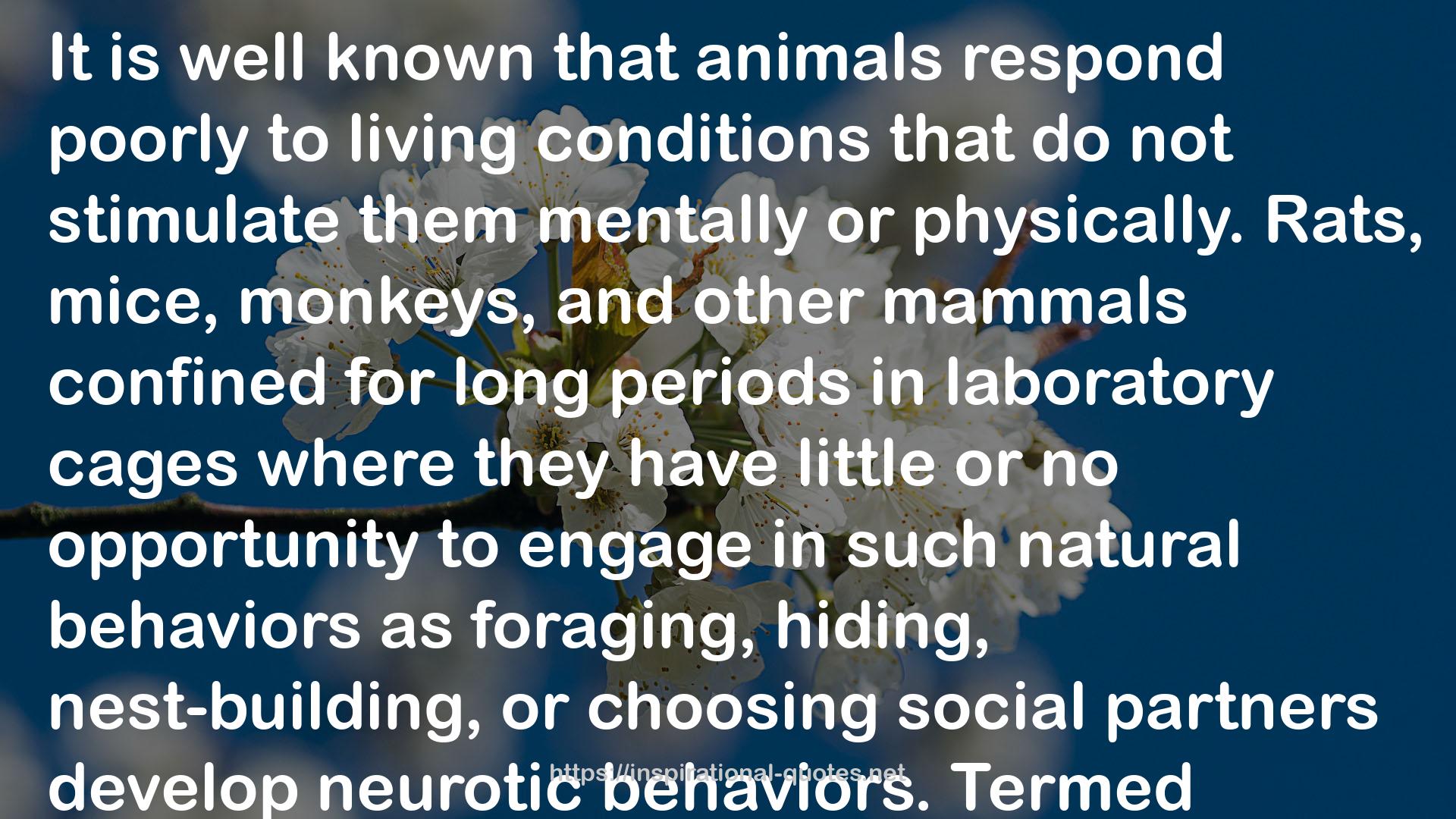" It is well known that animals respond poorly to living conditions that do not stimulate them mentally or physically. Rats, mice, monkeys, and other mammals confined for long periods in laboratory cages where they have little or no opportunity to engage in such natural behaviors as foraging, hiding, nest-building, or choosing social partners develop neurotic behaviors. Termed “stereotypies,” these behaviors involve repetitive, functionless actions sometimes performed for hours on end. Rodents, for example, will dig for hours at the corners of their cages, gnaw at the bars, or perform repeated somersaults. These “behavioral stereotypies” are estimated to afflict about half of the 100 million mice currently used in laboratory tests and experiments in the United States.16 Monkeys chronically confined to the boredom, stress, and social isolation of laboratory cages perform a wide range of abnormal, disturbing behaviors such as eating or smearing their own excrement, pulling or plucking their hair, slapping themselves, and self-biting that can cause serious, even fatal injury. Severely psychotic human patients display similar behaviors. If you’ve seen the repetitive pacing of caged big cats (and many other smaller animals) at the zoo, you’ve witnessed behavioral stereotypies. "
― Jonathan Balcombe , Second Nature: The Inner Lives of Animals
